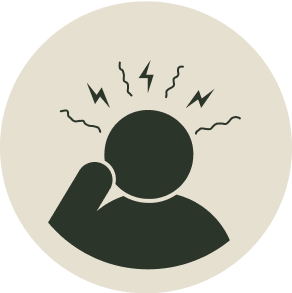The unmet need in geographic atrophy

Vision loss in GA may also lead to loss of independence1,2
Vision loss leaves patients and their carers facing emotional and financial burdens that impact their ability to perform essential and enjoyable daily activities.1,2
Your patients face losing their ability to do even simple things that others may take for granted:*3
Driving
Reading
Travelling
Hobbies
Working
GA can leave its mark on patients in more ways than one2,3
Geographic atrophy comes with a large emotional burden and loss of independence.†3

~7 out of 10 people living with GA feel the impact of vision decline on their quality of life and independence is worse than they expected†3

Almost half of patients who have difficulty recognising faces due to vision loss feel frustrated when they can’t recognise friends or family†‡3

Over a third of patients withdrew from their social lives due to vision loss†3

Almost three-quarters of patients living with geographic atrophy find their vision was impacted faster than they anticipated†3

Patients report that needing extra help to perform everyday tasks impacts not only their mental health, but also their relationships†3
Get to know Bill: listen to his experience of living with geographic atrophy
Bill was diagnosed with AMD in 1997, which developed into geographic atrophy by 2009. In this video, Bill shares how geographic atrophy has affected his life.

“My first thought was one of devastation. My imagination just ran riot. All questions were going through my head; will I go blind? If so, when will the lights go out?”
– Bill Best
Podcast
Hear the full story: learn more about Bill’s experience of geographic atrophy, from his initial symptoms to diagnosis to navigating vision loss and seeking support from a GA patient group.
Access useful information and resources to help patients with geographic atrophy and their caregivers
Patients want to be engaged in their condition and its management:

Almost all patients want more information about geographic atrophy to feel empowered to take control of their disease†3

~8 out of 10 wish there were more educational materials available for patients and caregivers†3
We’ve partnered with GA patients to create resources tailored to their needs
Working together with patients living with vision loss and the retina community, Apellis has created dryAMD, a website dedicated to providing information and support to those affected by geographic atrophy, an advanced form of age-related macular degeneration, as well as those who care for them.

Infographics

Videos

Podcasts

Resources
Join us on our journey in geographic atrophy
Be the first to receive the latest geographic atrophy news
Thank you for submitting your details.
Please check your inbox for confirmation


What is geographic atrophy
By 2040, 18 million people may be facing progressive, irreversible, and permanent vision loss.4,5

Progression in geographic atrophy
Geographic atrophy is progressive and irreversible, eventually leading to permanent vision loss.3–6

Complement overactivation in geographic atrophy
Overactivation of the complement system can be detrimental and is associated with several serious diseases, including geographic atrophy.9
*Driving (74%), reading (68%), travelling (62%), hobbies and social activities (43%), and the ability to work or volunteer (42%).3
†From the global Geographic Atrophy Insights Survey (GAINS) (N=203) conducted by The Harris Poll and sponsored by Apellis Pharmaceuticals in 2021. Online/telephone survey in participants >60 years old from the US, UK, France, Germany, Italy, Netherlands, Sweden, Canada, and Australia. Participants self-reported they had been diagnosed with AMD, with dry AMD in ≥1 of their eyes. They also had advanced atrophic AMD or advanced/late/late-stage dry AMD or advanced dry AMD or GA in ≥1 of their eyes and were experiencing >3 GA symptoms out of a list of ~15 symptoms.3
‡Small base size <100.3
References
- Jones D, et al. Invest Ophthalmol Vis Sci. 2022;63(7):A0145.
- Sivaprasad S, et al. Ophthalmol Ther. 2019;8(1):115–124.
- Apellis & The Harris Poll. 2022. Geographic Atrophy Insights Survey (GAINS).
- Wong WL, et al. Lancet Glob Health. 2014;2(2):e106–e116 and supplementary appendix.
- Fleckenstein M, et al. Ophthalmology. 2018;125(3):369–390.
- Holz FG, et al. Ophthalmology. 2014;121(5):1079–1091.
- Boyer DS, et al. Retina. 2017;37(5):819–835.
- Lindblad AS, et al. Arch Ophthalmol. 2009;127(9):1168–1174.
- Liao DS, et al. Ophthalmology. 2020;127(2):186–195.
EU-GA-2300007 June 2023